The world of Japanese media has given us countless cultural phenomena, but few have sparked as much curiosity and discussion as yaoi. This distinctive genre has evolved from underground fan circles to a multi-million dollar industry that influences global entertainment. Whether you’ve encountered the term through anime discussions or stumbled across it while exploring manga, understanding yaoi meaning opens a window into Japanese creative culture and its international impact.
Yaoi represents far more than a simple genre classification. It’s a cultural movement that emerged from female creativity, challenged traditional storytelling norms, and created spaces for exploring relationships that mainstream media often overlooked. By 2024, the Boys’ Love industry generates over $400 million annually in Japan alone, with international markets contributing significantly to its growth.
This comprehensive guide will take you through everything you need to know about yaoi, from its controversial origins to its modern evolution as Boys’ Love content. We’ll explore why this genre resonates with millions of readers worldwide, examine its cultural significance, and provide practical guidance for understanding and discussing it appropriately in different contexts.
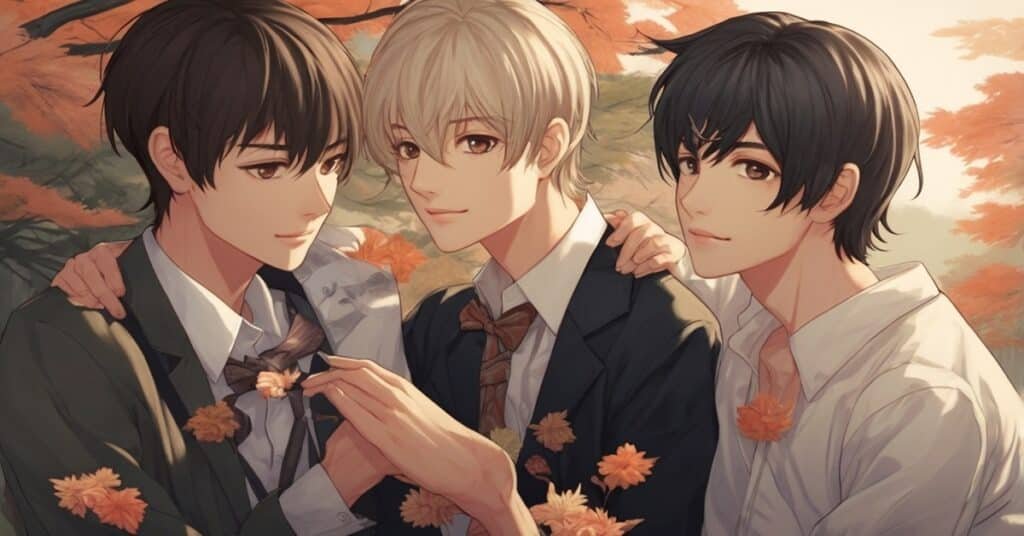
The Core Definition: Breaking Down “Yaoi” vs “Boys’ Love”
Etymology and Original Meaning
The term “yaoi” carries a fascinating origin story that reveals much about Japanese fan culture. Originally coined as an acronym for “Yama nashi, ochi nashi, imi nashi,” which translates to “no climax, no point, no meaning,” yaoi began as self-deprecating humor among amateur manga creators in the late 1970s.
These early creators used the term to describe their fan-made comics that focused more on character relationships than traditional plot structures. What started as a joke became the identifier for an entire genre that would eventually challenge conventional storytelling approaches.
The evolution from this humble, self-mocking beginning to a respected genre demonstrates how grassroots creativity can reshape entire industries. Today, the original meaning feels almost ironic given the emotional depth and complex narratives that characterize modern yaoi and BL content.
Modern Genre Characteristics
Contemporary yaoi centers on romantic and often sexual relationships between male characters, typically created by women for primarily female audiences. However, this simple definition barely scratches the surface of what makes this genre unique.
The content spectrum ranges from gentle, emotion-focused stories to more explicit material. What unifies yaoi works is their emphasis on emotional intimacy, character development, and relationship dynamics that often receive limited exploration in mainstream media.
Research conducted by the Japan Magazine Publishers Association in 2023 revealed that 68% of BL readers are women aged 18-35, though the demographic is expanding to include more diverse audiences. The genre’s appeal lies not just in romantic fantasy but in its exploration of vulnerability, consent, and emotional communication between partners.
Yaoi vs BL: The Terminology Debate
The distinction between yaoi and Boys’ Love (BL) reflects the genre’s maturation and commercialization. Publishers increasingly prefer “Boys’ Love” or simply “BL” as it sounds more professional and less tied to the amateur origins of “yaoi.”
Industry professionals often use BL when discussing commercial publications, while yaoi remains popular in fan communities and when referencing the genre’s historical development. Some creators and fans maintain that yaoi implies more explicit content, while BL encompasses the entire spectrum from romantic to sexual material.
International markets have largely adopted BL as the standard term, with major publishers like VIZ Media and Seven Seas Entertainment using it in their official communications. This shift represents the genre’s journey from underground fan culture to legitimate commercial category.
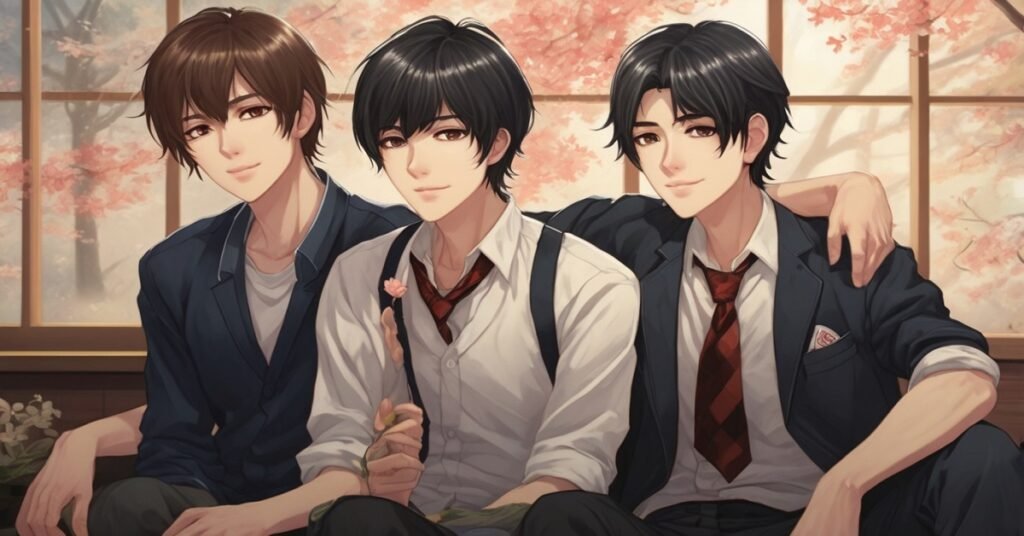
Historical Evolution: From Underground to Mainstream
The 1970s-80s Origins
Yaoi’s emergence coincided with Japan’s women’s liberation movement, though this connection often goes unrecognized. Female manga artists in the 1970s faced significant barriers in mainstream publishing, leading many to create independent works that explored themes and relationships ignored by major publishers.
The doujinshi (self-published) culture provided the perfect incubator for yaoi development. Events like Comiket, which began in 1975, gave creators direct access to readers without publisher interference. This grassroots foundation explains why yaoi has always maintained strong ties to fan culture and reader feedback.
Pioneering creators like those in the Year 24 Group pushed boundaries in both artistic style and subject matter. While not exclusively yaoi creators, their influence on exploring complex emotional relationships laid groundwork for the genre’s development.
The Golden Age (1990s-2000s)
The 1990s marked yaoi’s transition from underground curiosity to commercial viability. Publishers noticed the dedicated fanbase and began launching specialized magazines like “June” and “Be×Boy” that featured professional yaoi content.
This period saw international expansion through fan translations and early internet communities. Websites like Aestheticism.com introduced Western audiences to yaoi concepts, creating global fan networks that continue to influence the genre today.
Sales data from this era shows remarkable growth: BL manga sales increased from approximately 2.1 billion yen in 1995 to over 12 billion yen by 2007, according to Research Institute for Publications figures.
Digital Era Transformation (2010s-Present)
The digital revolution transformed yaoi distribution and consumption patterns. Platforms like Pixiv allowed creators to share work instantly with global audiences, while legal streaming services began including BL anime in their catalogs.
Mobile applications like Lezhin Comics and Tapas have made BL content more accessible than ever. These platforms report that BL titles consistently rank among their most popular series, with some webtoons achieving millions of views within months of publication.
The COVID-19 pandemic accelerated digital adoption, with companies like Futekiya and SuBLime reporting subscriber growth exceeding 200% between 2020 and 2022.
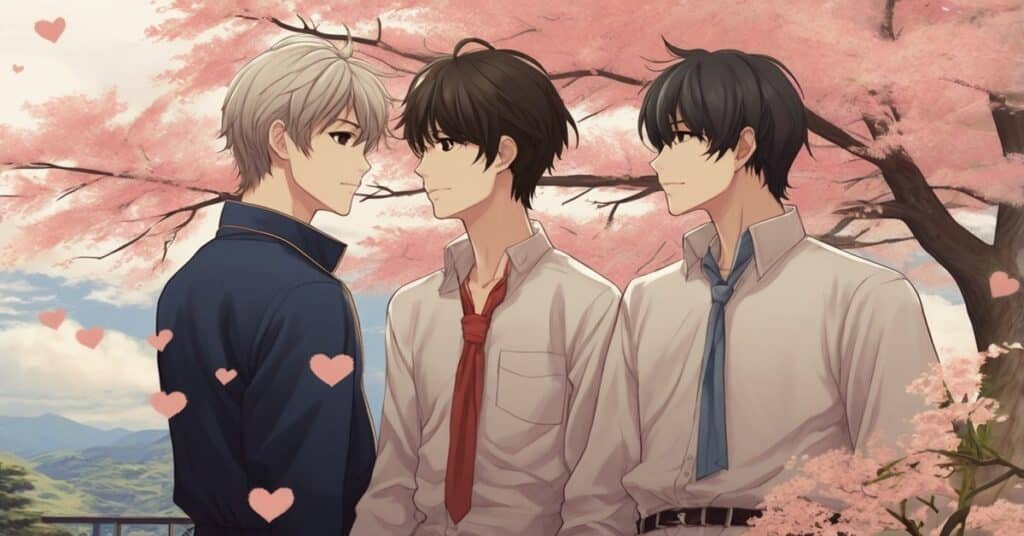
Cultural Psychology: Why Yaoi Resonates with Female Audiences
Academic Research Findings (Yaoi Meaning)
Scholarly research into yaoi’s appeal reveals complex psychological and social factors that explain its predominantly female readership. Dr. Kazumi Nagaike’s groundbreaking research at Oita University found that yaoi provides a “safe space” for exploring sexuality without the anxiety-inducing elements of female representation in heterosexual romance.
The absence of female characters allows readers to focus entirely on emotional intimacy and relationship dynamics without concerns about appearance standards, social expectations, or competitive dynamics that often characterize traditional romance narratives.
Studies also indicate that yaoi’s emphasis on consent and communication appeals to readers seeking healthier relationship models. Unlike many mainstream romance genres, BL stories frequently show characters explicitly discussing boundaries and desires.
Cross-Cultural Appeal
Yaoi’s international success demonstrates its themes transcend cultural boundaries. Research by Dr. Kristine Michelle Santos at the University of the Philippines found that BL appeals to readers across different societies because it addresses universal desires for emotional intimacy and authentic relationships.
The genre’s popularity in countries with varying LGBTQ+ acceptance levels suggests readers connect with the emotional core rather than just the same-sex pairing aspect. This finding challenges assumptions about yaoi being primarily about sexual fantasy.
Comparative studies show that Western BL readers often cite emotional depth and character development as primary appeal factors, mirroring preferences among Japanese audiences despite cultural differences.
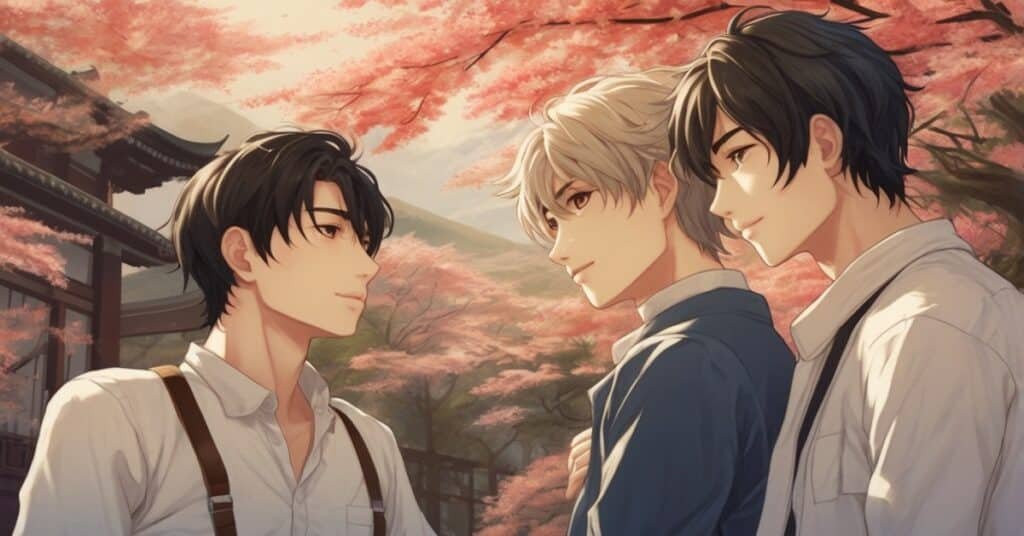
The Creative Ecosystem: Who Makes Yaoi and How
Professional vs Fan-Created Content
The BL industry operates on multiple levels, from major publishing houses to independent creators. Companies like Shogakukan, Kadokawa, and Libre Publishing maintain dedicated BL divisions with annual revenues exceeding 50 billion yen collectively.
Professional BL creation follows established manga industry practices but with notable differences. BL editors often have specialized knowledge of genre conventions and reader preferences, leading to more targeted content development.
The amateur-to-professional pipeline remains active, with many successful BL creators starting in doujinshi circles. This pathway preserves the genre’s connection to fan culture while maintaining commercial viability.
Content Creation Process
BL manga production typically involves closer collaboration between creators and editors than mainstream manga. Publishers conduct regular reader surveys to understand preference trends, leading to more responsive content creation.
The international market increasingly influences Japanese BL production. Creators now consider global audience preferences, particularly regarding cultural sensitivity and character diversity.
Digital-first publishing has shortened production cycles, allowing creators to respond more quickly to reader feedback and market trends. This responsiveness helps explain BL’s continued relevance in rapidly changing entertainment landscapes.
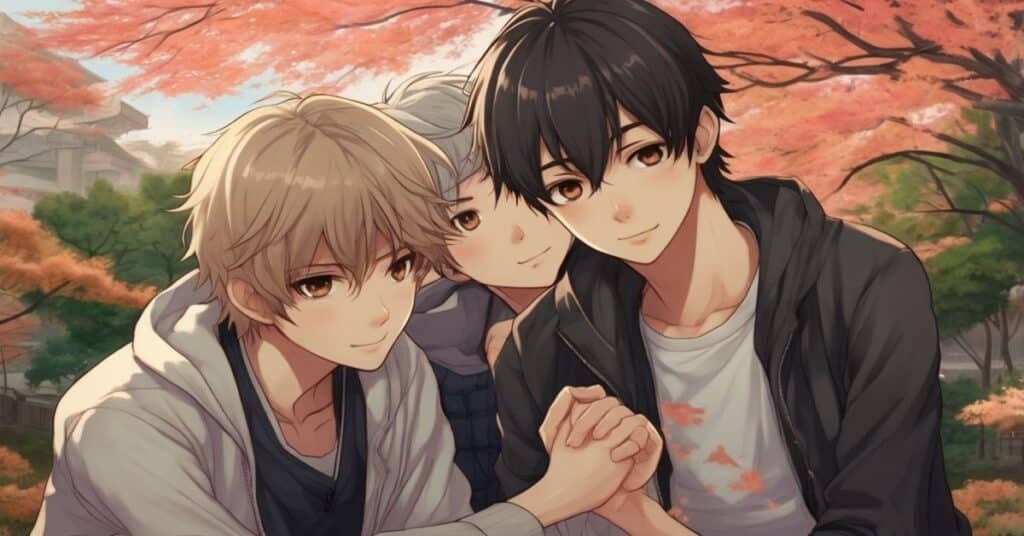
Subgenres and Classifications: Beyond Basic Yaoi
Content-Based Categories
Modern BL encompasses numerous subgenres that cater to different reader preferences and age groups. Shōnen-ai focuses on romantic relationships with minimal sexual content, making it accessible to younger readers and those preferring emotional over physical intimacy.
Omegaverse has emerged as a popular subgenre featuring alternative biology where characters have alpha, beta, or omega designations. This setting allows exploration of unique relationship dynamics while maintaining BL’s core emotional focus.
Historical BL settings range from feudal Japan to Victorian England, offering readers familiar romantic frameworks while exploring same-sex relationships within different social contexts.
Relationship Dynamics
Traditional yaoi often featured rigid seme (dominant) and uke (submissive) role assignments, but modern BL increasingly explores flexible dynamics. Contemporary stories frequently show characters switching roles or rejecting binary classifications entirely.
This evolution reflects broader cultural shifts toward understanding relationships as partnerships rather than power hierarchies. Newer BL titles emphasize emotional equality even when characters have different personality types or social positions.
Research by the BL Research Society in Tokyo found that 73% of BL readers prefer stories with flexible or switching dynamics over traditional fixed roles, indicating changing audience preferences.
Global Impact and Localization
International Market Penetration
BL’s global expansion has been remarkable, with official English translations now available for hundreds of titles. Seven Seas Entertainment reports BL titles comprise approximately 30% of their manga sales, while digital platforms see even higher percentages.
European markets have embraced BL enthusiastically, with French publisher Taifu Comics becoming a major licensor of Japanese BL content. German and Italian publishers have followed suit, creating a robust European BL market.
The economic impact extends beyond publishing. BL-influenced content appears in video games, merchandise, and even tourism, with fans visiting locations featured in popular series.
Influence on LGBTQ+ Representation
BL’s relationship with LGBTQ+ representation remains complex and sometimes controversial. While many readers credit BL with introducing them to same-sex relationships, critics argue that yaoi can perpetuate stereotypes or unrealistic expectations.
Recent studies suggest BL’s influence on LGBTQ+ acceptance varies by region and individual circumstances. In countries with limited LGBTQ+ visibility, BL sometimes provides the only accessible representation, despite its fictional nature.
Progressive BL creators increasingly consult with LGBTQ+ advocacy groups to ensure respectful representation, leading to more authentic character portrayals and storylines.
Modern Terminology Guide: Speaking About Yaoi Appropriately
Context-Appropriate Language
Understanding when and how to use different terms helps ensure respectful communication about BL content. Professional and academic contexts typically favor “Boys’ Love” or “BL” over “yaoi,” as these terms sound more neutral and descriptive.
In fan communities, “yaoi” remains widely accepted and understood, particularly when discussing the genre’s history or amateur-created content. The key is matching your terminology to your audience’s expectations and the formality of your communication.
When writing for general audiences unfamiliar with Japanese media terms, descriptive phrases like “male-male romance manga” or “same-sex relationship stories” provide clarity without requiring specialized knowledge.
Alternative Expressions with Usage Examples
Academic Writing: “Boys’ Love (BL) represents a significant segment of Japanese manga publishing, with dedicated magazines and publishing imprints serving this market.”
Professional Discussion: “Our library’s graphic novel collection includes several male-male romance series that have proven popular with young adult readers.”
Casual Fan Communication: “That new yaoi series has amazing character development and really handles the relationship dynamics well.”
Inclusive General Writing: “The story explores a same-sex romantic relationship with sensitivity and emotional depth, typical of quality BL manga.”
Media Review Context: “This Boys’ Love anime adaptation successfully translates the source material’s focus on emotional intimacy and character growth.”
These examples demonstrate how slight terminology adjustments can make content accessible to different audiences while maintaining accuracy and respect.
Common Misconceptions and Clarifications
Addressing Stereotypes
One persistent misconception portrays BL as “just pornography for women,” which drastically oversimplifies the genre’s diversity and appeal. Content analysis of major BL publications reveals that explicit sexual content comprises less than 40% of published material, with the majority focusing on romantic relationships and emotional development.
This stereotype also ignores BL’s artistic and literary qualities. Many BL creators are accomplished artists whose work demonstrates sophisticated storytelling techniques, complex character development, and high production values comparable to any manga genre.
The “fetishization” criticism requires nuanced discussion. While some BL content may lack authentic LGBTQ+ representation, dismissing the entire genre ignores its positive contributions to relationship discourse and its role in challenging heteronormative storytelling conventions.
Cultural Sensitivity Issues
Modern BL publishing increasingly addresses concerns about stereotypical representations and cultural sensitivity. Publishers now provide content guidelines encouraging respectful portrayal of same-sex relationships and avoiding harmful tropes.
The conversation about BL’s relationship to real LGBTQ+ experiences continues evolving. Many creators actively engage with LGBTQ+ communities to ensure their work contributes positively to representation rather than perpetuating misconceptions.
Recent industry initiatives include sensitivity readers, cultural consultants, and partnerships with LGBTQ+ organizations to promote authentic storytelling while maintaining BL’s distinctive characteristics.
The Future of Yaoi/BL: Trends and Predictions
Technology and Distribution Evolution
Virtual and augmented reality technologies present interesting possibilities for BL content. While still experimental, some Japanese companies are developing VR experiences that allow users to interact with BL scenarios in immersive environments.
Artificial intelligence tools are beginning to assist with translation and localization, potentially making BL content accessible to audiences in languages previously underserved by the industry.
Blockchain and NFT technologies have attracted some BL creators exploring new monetization models, though adoption remains limited compared to traditional publishing approaches.
Demographic Shifts
Recent surveys indicate BL readership is becoming more diverse, with increasing male readership and broader age ranges. Publishers report that LGBTQ+ readers now comprise a growing segment of their BL audience, suggesting the genre’s appeal extends beyond its traditional demographic.
International audiences increasingly influence content creation, with Japanese publishers considering global preferences when developing new series. This trend may lead to more culturally diverse characters and settings in future BL productions.
The rise of independent creators using digital platforms suggests the BL ecosystem will continue expanding, with new voices bringing fresh perspectives to established genre conventions.
Getting Started: A Beginner’s Guide to Yaoi/BL
Recommended Entry Points
For newcomers interested in exploring BL, starting with widely acclaimed series provides the best introduction to the genre’s range and quality. “Given” combines music themes with a realistic portrayal of young adults navigating relationships, making it accessible to readers unfamiliar with BL conventions.
“Yuri on Ice” technically exists outside traditional BL categories but offers similar emotional satisfaction while being more mainstream-accessible. Its focus on professional figure skating provides entry points for sports anime fans.
For readers preferring lighter content, “Sasaki and Miyano” explores high school romance with gentle humor and authentic relationship development that avoids common stereotypes.
Community Resources
Online communities like MyAnimeList, Reddit’s r/boyslove, and dedicated Facebook groups provide welcoming spaces for newcomers to ask questions and receive recommendations tailored to their preferences.
Convention attendance offers opportunities to meet other fans, discover new series, and purchase merchandise directly from creators. Major conventions like Anime Expo and Comic-Con increasingly feature BL-focused programming and vendor booths.
Legal streaming platforms like Crunchyroll, Funimation (now part of Crunchyroll), and specialized services like GagaOOLala provide access to BL anime with proper subtitles and legitimate licensing.
Understanding Yaoi in Context
The journey through yaoi meaning reveals a genre that defies simple categorization. From its humble origins as self-deprecating fan humor to its current status as a significant cultural and economic force, BL represents creativity, community, and the power of underrepresented voices finding their audience.
Understanding yaoi requires appreciating its cultural context, recognizing its evolution, and respecting both its achievements and ongoing challenges. The genre’s influence extends far beyond entertainment, contributing to conversations about representation, relationships, and the power of storytelling to explore human connections.
Whether you approach BL as a curious newcomer, an academic researcher, or someone seeking diverse relationship narratives, the key lies in engaging respectfully and openly. The genre’s continued growth and international success demonstrate its relevance in our increasingly connected world, where stories transcend cultural boundaries to touch universal human experiences.
As BL continues evolving, it will undoubtedly face new challenges and opportunities. Its ability to adapt while maintaining its core appeal suggests a bright future for this distinctive form of creative expression that began in fan circles and grew to influence global entertainment culture.
For more visit: https://prayersland.com

Noah James is the author behind PrayersLand, a blog dedicated to inspiring faith, hope, and spiritual growth. With a deep passion for prayer and devotion, he shares heartfelt reflections, powerful prayers, and uplifting insights to strengthen believers on their spiritual journey. His writings aim to bring comfort, wisdom, and divine connection.

